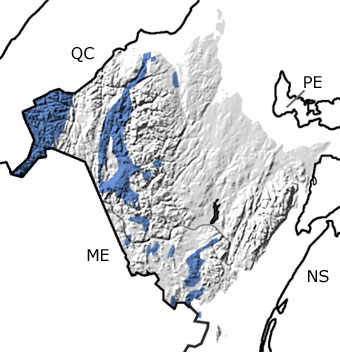Paleontology and geologyIn the Devonian, volcanism continued as island arcs and the Avalon terrane were still being pushed together. This heat and pressure brought large volumes of magma near the surface, creating intrusions of igneous rock that are now exposed in the north and west. The mountains we know today as Sugarloaf Mountain and Bald Peak in northern and western New Brunswick are ancient volcanoes that formed at the end of this period. In the Early Devonian, part of northern New Brunswick was covered by a shallow sea. The warm waters were home to corals, brachiopods, trilobites, sea scorpions, and fish. The sea, as well as the nearby estuaries, rivers, and lakes, hosted a wide variety of fish, including jawless fish, armored fish, and sharks. Life moved onto land by this time, and some of the earliest known land plants (Psilophyton) and insects (early scorpions and millipedes) have been found in this province. By the Middle Devonian, most of New Brunswick was above sea level, and deposition was restricted to rivers, floodplains, and lakes. The red and green conglomerates, sandstones, and siltstones in southern New Brunswick are the same as the famous “Old Red Sandstone” in Great Britain.
|




